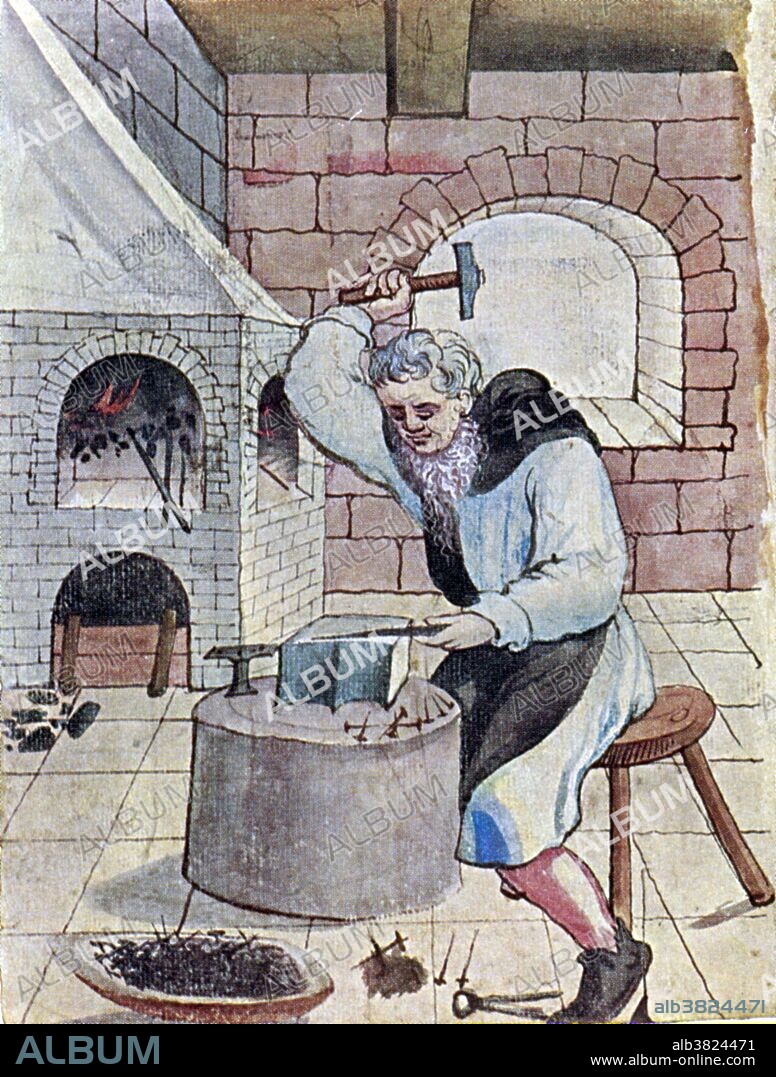alb3824471
Nailsmith, 1529

|
Add to another lightbox |
|
Add to another lightbox |



Buy this image.
Select the use:

Title:
Nailsmith, 1529
Caption:
Nails go back to the Ancient Roman period. The provision of iron for nails by King David for Solomon's Temple is mentioned in the Bible. Until the end of the 18th century, they were made by hand, and were provided by an artisan known as a nailer. Until the early 17th century there were workmen called Slitters who cut up iron bars to a suitable size for nailers to work on, but in 1590 the slitting mill was introduced to England, providing a mechanical means of producing rods of uniform cross-section. In the 19th century, after the invention of machines to make "cut nails", some nails continued to be made by hand, but the handmade nail industry gradually declined and was largely extinct by the end of that century.
Credit:
Album / Science Source / New York Public Library
Releases:
Model: No - Property: No
Rights questions?
Rights questions?
Image size:
2891 x 3815 px | 31.6 MB
Print size:
24.5 x 32.3 cm | 9.6 x 12.7 in (300 dpi)
Keywords:
1529 • 16 16TH XVI XVITH SIXTEENTH CENTURY • 16 CENTURY • 16TH CENTURY • 16TH • ANVIL • ART • ARTISAN • ARTWORK • ASSOCIATION • ATELIER • BLACKSMITH (MALE) • BLACKSMITH TOOLS • BLACKSMITH • BLACKSMITHING • BROTHERHOOD • CORPORATION • DRAWING • FORGE • FRATERNITIES • FRATERNITY • GUILD = TRADE GUILD • GUILD • HAMMER • HAMMERING • HISTORIC • HISTORICAL • HISTORY • ILLUSTRATION • ILLUSTRATIONS • IRON ANVIL • LEAGUE • MERCHANT • NAILER • NAILSMITH • OCCUPATION • PROFESSION • SMITH TOOLS • SMITH • TRADE GUILD • TRADE • TRADE: BLACKSMITH • TRADESMAN • TRADESMEN • WORKSHOP • XVI CENTURY
 Pinterest
Pinterest Twitter
Twitter Facebook
Facebook Copy link
Copy link Email
Email
